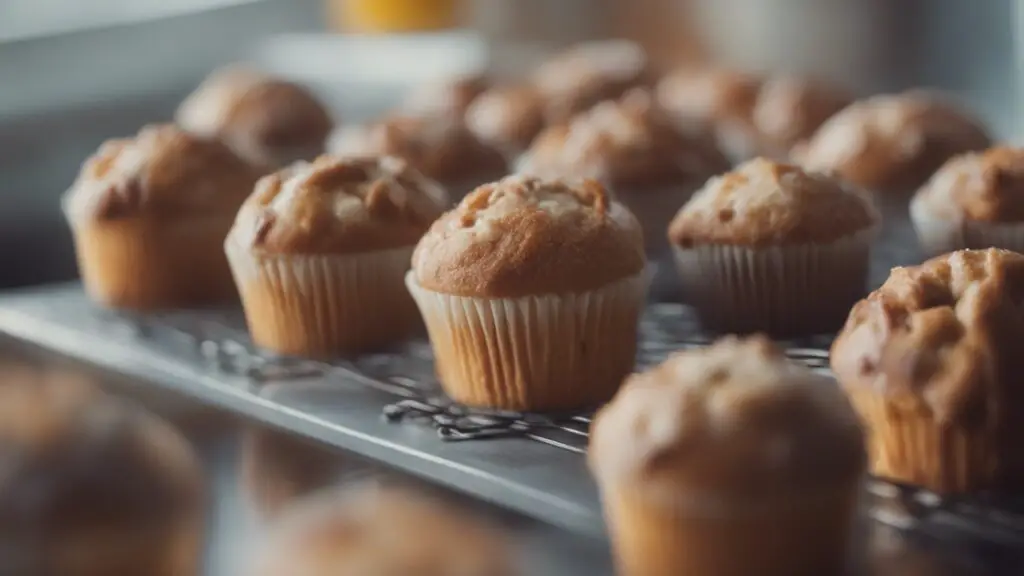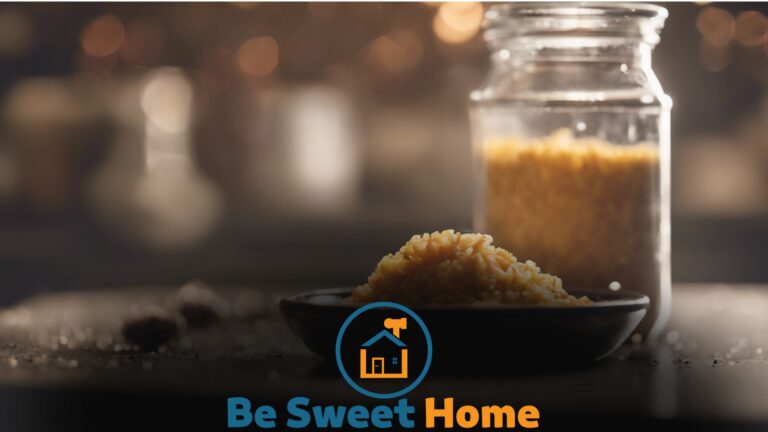

Yes, loaf recipes can often be adapted for muffins. Minor adjustments may be needed for baking times and temperatures.
Exploring the versatility of loaf recipes opens up many quick and convenient baking options.
Muffins offer a perfect single-serving alternative for breakfasts, snacks, or on-the-go treats.
Most loaf recipes, such as banana bread or pumpkin loaf, easily transform into muffin form.
The key lies in modifying the bake time – typically shorter for muffins – to ensure a delightful golden crust and a soft, moist center.
Embracing this method not only saves time but also allows for creative presentation.
Bakers everywhere enjoy the ease of converting beloved classics into bite-sized delights, making the most of their tried-and-true recipes.
Loaf to Muffin Conversion


Ever wonder if your favorite loaf recipes could transform into delightful muffins?
Discover the art of ‘Loaf to Muffin Conversion’ and expand your baking repertoire with easy-to-follow tweaks.
Not only are muffins quicker to bake, but they also serve as perfect single-serve treats!
Key Differences in Baking Methods
Loaves and muffins require different baking techniques to achieve their unique textures.
- Baking Time: Muffins bake faster than loaves due to their smaller size.
- Oven Temperature: Muffins may need a higher temperature to get a nice rise.
- Baking Vessels: Use a muffin pan instead of a loaf tin for perfect muffin shapes.
Adjusting Portion Sizes
To ensure evenly sized muffins, tweaking the original loaf recipe portions is key.
| Loaf Recipe Amount | Muffin Cups |
|---|---|
| 1 loaf | 12 standard muffins |
| ½ loaf | 6 standard muffins |
Use a cookie scoop or measuring cup to fill muffin cups equally.
Batter Basics
When itching to try something new in the kitchen, consider this: many loaf recipes can morph into delightful muffins! Understanding the batter is crucial.
It’s the foundation that leads to perfect baked treats, whether they’re loaves or muffins. Here, we’ll explore how to make that transition a success.
Understanding Consistency
A key difference between loaf and muffin batters is their consistency. Loaf batters tend to be thicker, whereas muffin batters are generally more fluid.
This gives muffins their signature light and fluffy texture. To ensure your muffins aren’t too dense, it’s important to adjust the consistency of your loaf batter.
Tweaking Ingredients for Texture
Adjusting a few ingredients can change the batter’s texture. Depending on your loaf recipe, you might need to alter the amount of liquid, leavening agents, or fats.
Below is a simple guide to get the texture just right.
| Ingredient | Loaf Recipe | Muffin Recipe |
|---|---|---|
| Liquid (milk, water) | Reduce slightly | Increase to lighten |
| Leavening (baking soda, powder) | Keep same | Might reduce for less dome |
| Fat (butter, oil) | Can decrease | Adjust for moistness |
- Gather your ingredients: Ensure they are at room temperature.
- Measure correctly: Use the spoon and level method for dry ingredients.
- Mix gently: Overmixing can cause muffins to become tough.
The loaf batter will transform into a muffin masterpiece by balancing the ratios.
Try it out, and you may discover your new favorite way to bake!
Timing is Everything
Ever wondered if your favorite loaf recipes can transform into delightful muffins? The key to success is mastering the timing.
Due to their smaller size, muffins cook quicker than loaves. Getting the timing right ensures a perfect rise and a moist center.
Calculating Cooking Time
To shift from loaf to muffin, reduce the cooking time. A loaf that takes an hour might only need 20-25 minutes for muffins. Start by checking the following factors:
- Recipe size: Smaller volume cooks faster.
- Oven temperature: Higher heat bake more quickly.
- Muffin pan material: Metal bakes faster than silicone or stoneware.
Use this table as a guideline for converting times:
| Loaf Bake Time | Estimated Muffin Time |
|---|---|
| 60 minutes | 20-25 minutes |
| 45 minutes | 15-20 minutes |
| 30 minutes | 10-15 minutes |
Remember to start with the minimum time and add if necessary.
Testing for Doneness
Even with a timer, testing is the best way to ensure perfect muffins. Look for golden tops. Feel for a firm but springy texture.
A toothpick inserted into the center should come out clean or with a few crumbs but no batter. Check at least a couple of muffins for consistency.
Be aware that each oven is unique; your experience is the best guide.
- Golden brown top: Color indicates surface cooking.
- Springy to the touch: A sign of a fully cooked interior.
- Toothpick test: The classic test for readiness.
Watch muffins closely as they near the end of their baking time. A few minutes can make a big difference between done and overdone.
Temperature Troubles
Finding the perfect bake time and temperature can be tricky. Our search to transform loaf recipes into delightful muffins leads us to confront our baking nemesis: Temperature Troubles.
Oven heat can act like a fickle friend to your baking adventures. Let’s dissect these temperature issues and master the oven for perfect muffins every time.
Oven Heat Distribution
Understanding your oven’s character is key to successful baking. Every oven is unique, with its hot spots and quirks.
- Convection ovens offer more uniform heat, reducing the risk of uneven baking.
- Conventional ovens might demand rotating the muffin tray halfway through the baking process.
Invest in an oven thermometer to reveal the true temperature inside your oven.
Trusting your oven’s setting without confirmation might lead to underbaked or overdone muffins.
Impact on Rising and Browning
The right temperature is a pillar for muffin perfection. Loaf recipes generally call for longer baking at lower temperatures.
Adapting to muffins means adjusting these elements:
| Attribute | Loaf to Muffin |
|---|---|
| Temperature | Increase slightly for muffins. |
| Time | Reduce significantly. |
Ensure a higher initial heat to give muffins a quick rise. This leads to a proud, rounded top versus a quick bread’s traditional crack.
Check muffins early to prevent over-browning.
Mix-ins and Toppings
Transform loaf recipes into delectable muffins! Experimenting with mix-ins and toppings is a game-changer. It adds unique flavors and textures.
Let’s dive into the exciting ways to customize your muffins with fruits, nuts, and a crunchy finish!
Incorporating Fruits and Nuts
Fruits and nuts bring natural sweetness and a delightful crunch to muffins. They’re easy to mix in. Here’s how:
- Choose fresh or dried fruits like blueberries or chopped apples.
- Opt for nuts such as walnuts or pecans for a nutty bite.
- Mix them into the batter evenly.
| Fruit/Nut Choice | Preparation | Quantity |
|---|---|---|
| Blueberries | Rinse and pat dry | 1 cup |
| Chopped Walnuts | Toast lightly | 1/2 cup |
Creating a Crispy Topping
A crispy topping adds a delightful contrast to the soft muffin interior. Try this simple streusel recipe:
- Mix flour, sugar, and cinnamon in a bowl.
- Cut in butter until crumbly.
- Sprinkle over muffins before baking.
Troubleshooting Common Issues
Converting loaf recipes into muffins is a delightful twist on traditional baking.
But when miniature treats come out less than perfect, worry not! Here’s a guide to fixing common problems encountered during the transformation.
Avoiding Over or Undermixing
Mixing batter just right is crucial. Too much mixing overdevelops the gluten, making dense muffins.
Too little leaves ingredients improperly combined. Follow these straightforward steps for the perfect consistency:
- Combine dry ingredients separately.
- Whisk wet ingredients together.
- Fold the dry mix into the wet mix until it is combined.
Using a gentle hand prevents overmixing. Stop when you no longer see dry flour.
Dealing With Moisture Imbalances
Striking the right moisture balance ensures muffins aren’t too dry or soggy. Consider these tips:
| Reduce the liquid, or add a bit more flour. | Solution |
|---|---|
| Dry Muffins | Add a touch more liquid or fat. |
| Soggy Muffins | Reduce liquid, or add a bit more flour. |
Ingredient ratios matter. Small adjustments can make a big difference. Start with minimal changes to achieve perfectly moist muffins.
Frequently Asked Questions
What Not to Do When Making Muffins?
Avoid overmixing the batter; it creates tough muffins. Don’t fill muffin cups too full; they’ll overflow.
Skip pre-heating ovens at incorrect temperatures; follow recipes closely. Avoid old leavening agents to ensure proper rise.
Never skip greasing the muffin tin if liners aren’t used.
What is the Difference Between a Muffin and Bread?
Muffins are single-serving quick breads, typically sweet, made with a batter. Bread is usually a more prominent, savory baked good made with dough and often yeast-leavened.
Why are Bakery Muffins So Much Better?
Bakery muffins often surpass homemade ones due to professional bakers’ expertise, high-quality ingredients, and precise baking techniques that ensure perfect texture and flavor.
What is the Difference Between Cake and Muffins?
Cakes are generally sweeter, fluffier, and larger than muffins. Muffins have a denser, bread-like texture and may contain less sugar and fat.
Can Loaf Recipes Be Converted to Muffins?
Loaf recipes can be adapted for muffin tins with adjusted baking times and temperatures due to their smaller size.
Conclusion
Experimenting with loaf recipes in muffin tins is a delightful twist on traditional baking.
It’s clear that with a few adjustments, bread favorites transform into muffin-sized treats perfect for on-the-go snacking or sharing.
Embrace your creativity in the kitchen; your taste buds will thank you.
Ready, set, bake!







